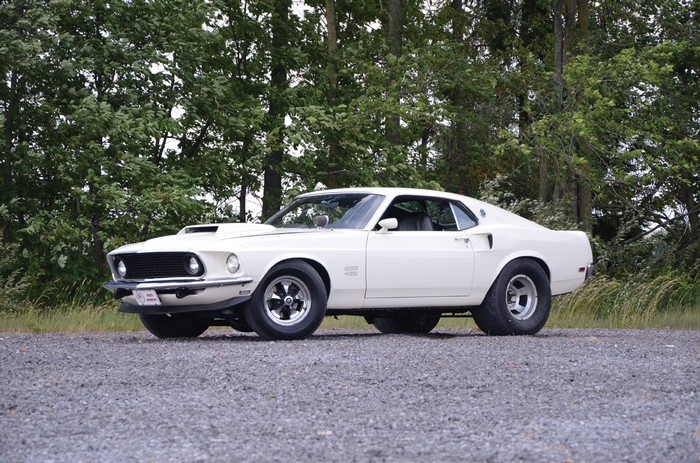Chassis Number: 9F02Z171575
Built to homologate the new 429 “semi-Hemi” engine for NASCAR, the Boss 429 was the most powerful Mustang ever and one of the rarest as well. The engine, intentionally under-rated at 375 horsepower, featured a forged-steel crank, NASCAR rods, four-bolt main bearing caps and large-valve aluminum heads with crescent-shaped combustion chambers. A large cold-air scoop fed a huge Holley carburetor atop an aluminum high-rise intake manifold; breathing was controlled by a hydraulic cam that was replaced partway through production with an improved solid-lifter version. All 429s were equipped with power steering and brakes with front discs, a Hurst-shifted 4-speed and 3.91 Traction-Lok rear end.
This white 1969 Boss 429 had a high-profile career as a test bed and drag car for Custom Enterprises on Long Island, NY, and was the focus of a feature article in the February 1970 issue of Hot Cars magazine. Disappointed by an initial test in their August 1969 issue, the editors visited Custom Enterprises and interviewed this car’s owner, John Riedel, who had been busy whipping the Boss into an 11.70 machine.
Riedel had fitted the car, which was capable of mid-14s in stock trim, with 90/10 front shocks, a 1050 cfm Holley 3-barrel, a 610-series Holman Moody cam kit and 5.13 gears. The results spoke for themselves, and the Hot Cars crew returned to counter their first story with a glowing report of the big Boss’s lively new act.
Thirty-eight years later, the car shows just over 2,200 miles on the odometer and remains in its original white with black décor group interior. The single Holley 3-barrel has given way to twin Holley fours on a dual tunnel-ram intake. The 4-speed shifter is still there, along with the roll bar installed all those years ago to meet SS/D rules.

